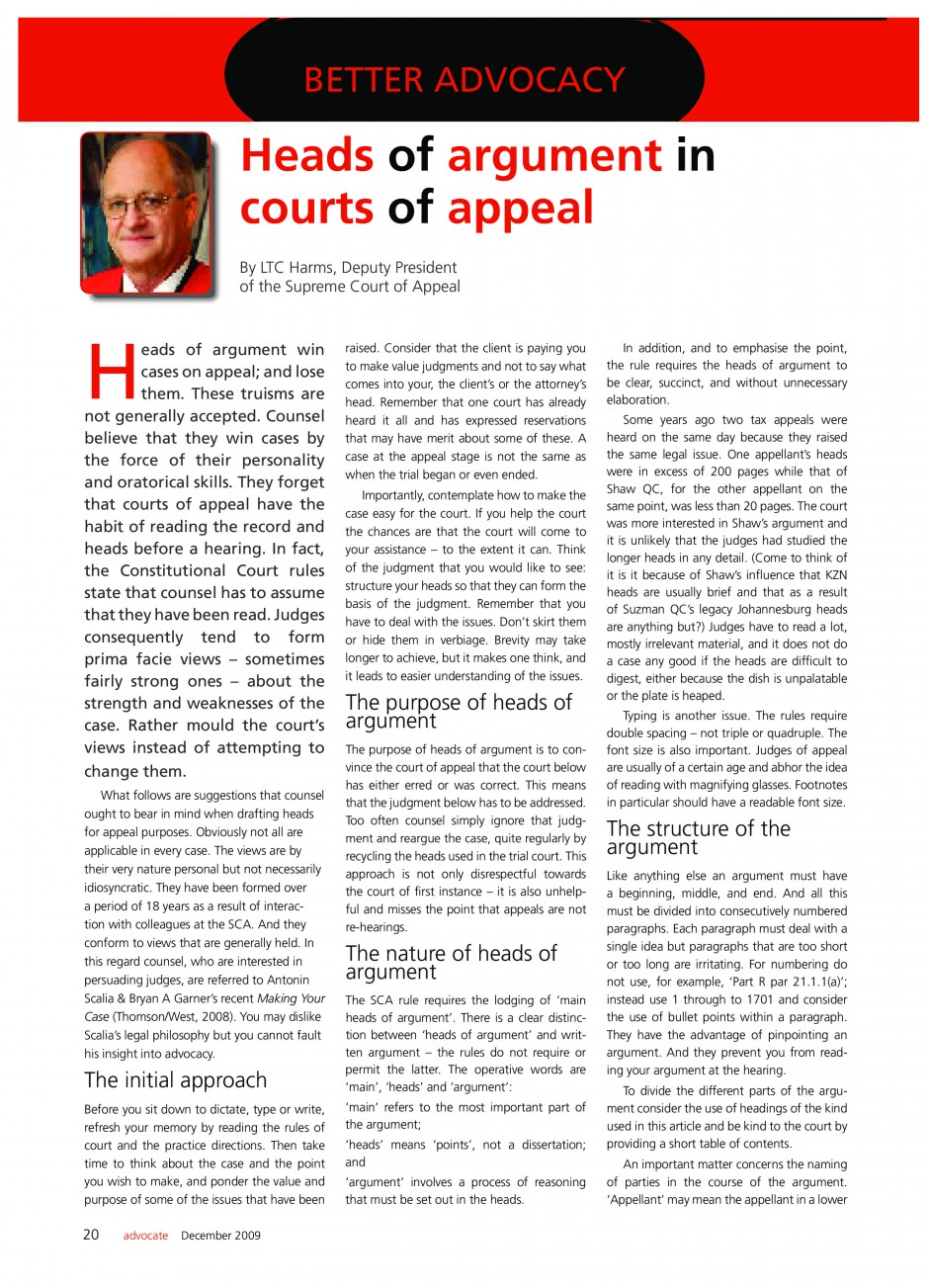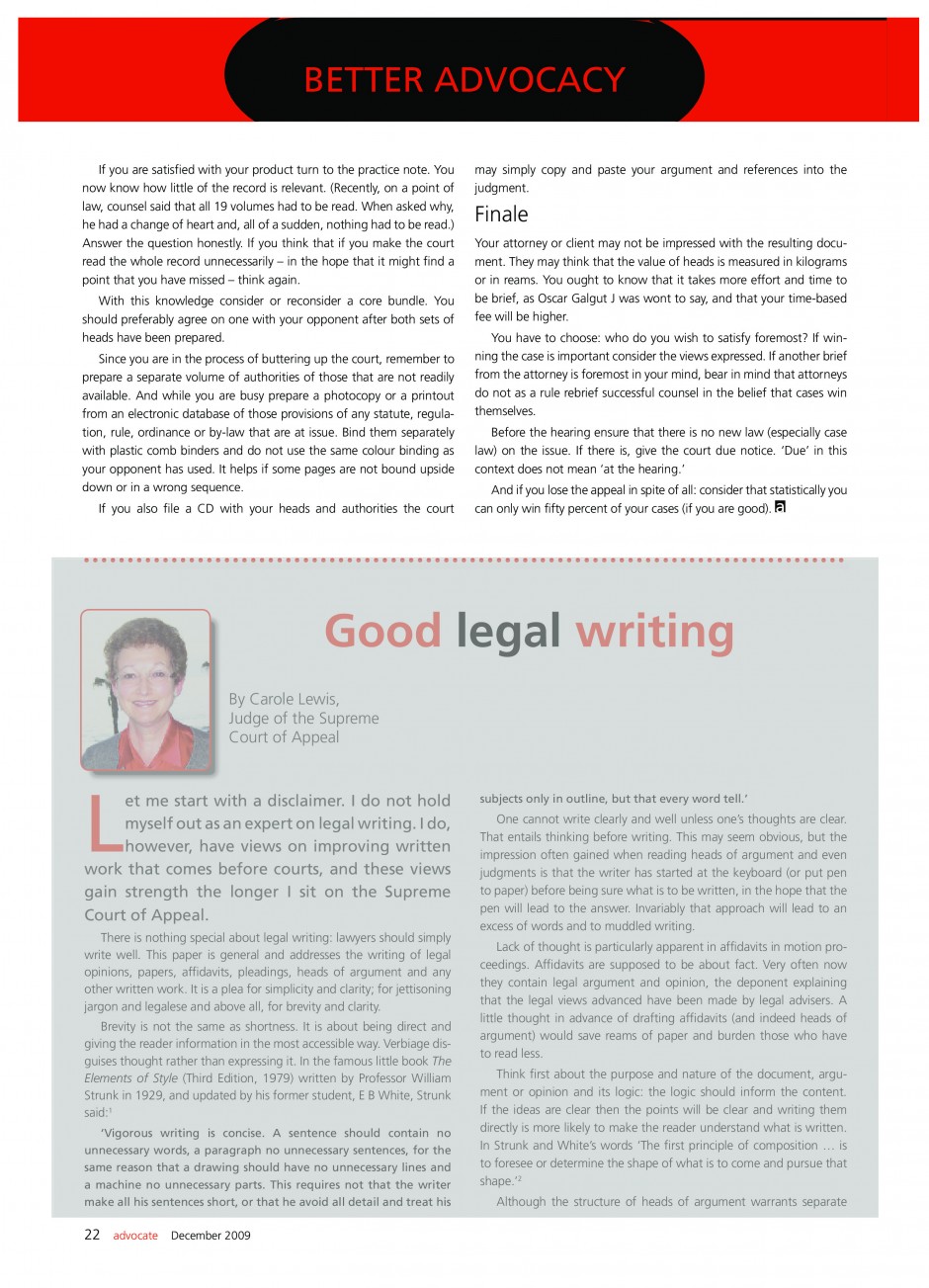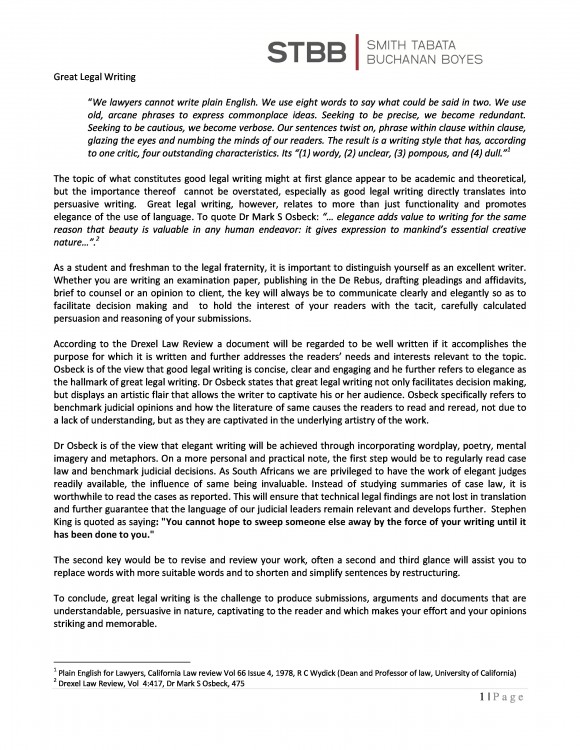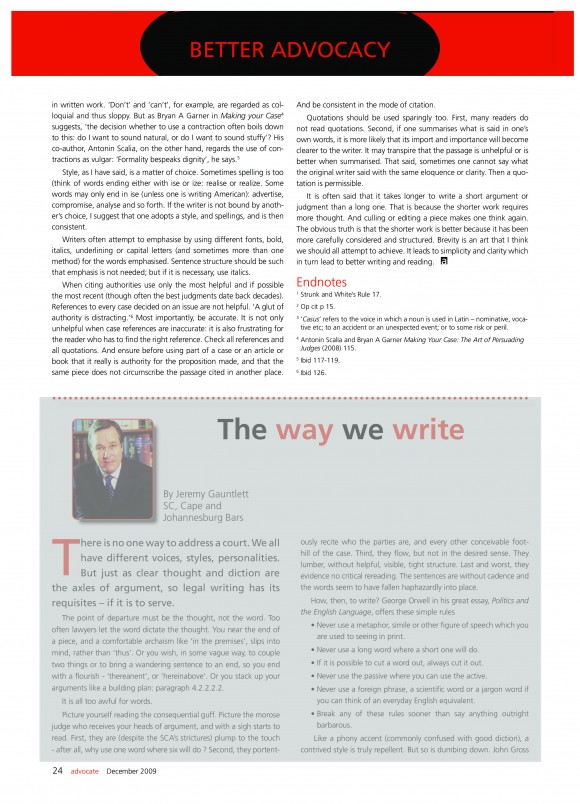by Chantelle | Sep 19, 2014 | Strategic Legal Writing
 The power of Heads of Argument
The power of Heads of Argument
In this article I will briefly address the importance of Heads of Argument and will also guide you in drafting your own. My hope is that you will have a better understanding of what Heads of Argument entail and that you would also feel confident to draft your own, once you have read this article.
I completed my articles at a large firm which was not involved in much Magistrate Court litigation. As a result I can only remember attempting to draft heads of argument once during this time, which proved to be an extremely daunting task. The only heads of argument that I had seen at that stage, were those drafted by Senior Counsel, which were rather lengthy and dealt with complicated legal issues. (more…)
by Chantelle | Aug 25, 2014 | Strategic Legal Writing

MK Osbeck “What is “good legal writing,” and why does it matter?” (2012) 4 Drexel Law Review 417 – 467.
Abstract
Law schools face increasing pressure to improve instruction in practice oriented skills. One of the most important of these skills is legal writing. The existing literature on legal writing contains various rules and suggestions as to how legal writers can improve their writing skills. Yet it lacks an adequate theoretical account of the fundamental nature of good legal writing. As a result, legal writers are left without a solid conceptual framework to ground the individual rules and suggestions. This Article attempts to fill the theoretical void in the literature by offering a systematic analysis of what it is for a legal document to be well written. It starts by examining a foundational conceptual issue, which is what legal writers mean when they say that a legal document is well written. It argues that legal readers judge a document to be well written if the writing helps them make the decisions they need to make in the course of their professional duties. The Article then provides an analysis of the fundamental qualities that enable legal writing to do this, concluding that there are three such qualities: clarity, conciseness, and the ability to appropriately engage the reader. The Article explains why each of these qualities is essential to good legal writing, and it examines the tools good writers use to make their writing clear, concise, and engaging. Lastly, the Article examines what it is that distinguishes the very best writing in the field, arguing that great legal writing is not just writing that is especially clear, concise, and engaging, but is instead writing characterized by a separate quality, elegance, that is aesthetic in nature. The Article then goes on to explore what it is that makes such writing elegant, and whether it is desirable for legal writers to strive for elegance in their own writing. The Article concludes by briefly considering the pedagogical implications of the analysis discussed in the previous sections.
Download full article here.
by Chantelle | Jun 7, 2014 | Strategic Legal Writing
Duty to rescue? Exploring legal analysis through the lens of photojournalists’ storytelling dilemmas
In depicting scenes of tragedy, what happens when photojournalists become the story? Do photojournalists have a duty to rescue those they photograph? Should they? This article will use a series of iconic images – and the stories of the photojournalists behind the camera – to illustrate how exploring these questions can be a provocative vehicle through which to engage new law students in legal writing and analysis. The article focuses on an exercise that centers around a fictional “Duty to Rescue” statute modeled after European statutes of the same kind. The exercise is anchored by four images – three still photographs and one image that is part of a short documentary film – of people in tragic and near-death situations. The article explores ways to use the stories behind these images to engage law students in the question of whether the photojournalists who took the images had violated the fictional Duty to Rescue statute, and concludes with a discussion of ideas on how the basic exercise can be modified and/or expanded, including but not limited to raising issues of morality-based lawmaking, ethics, fairness, and differences in law across cultures.
Read the full article here.
Source: http://www.tandfonline.com/doi/abs/10.1080/03069400.2014.914688?tab=permissions#
 The power of Heads of Argument
The power of Heads of Argument






